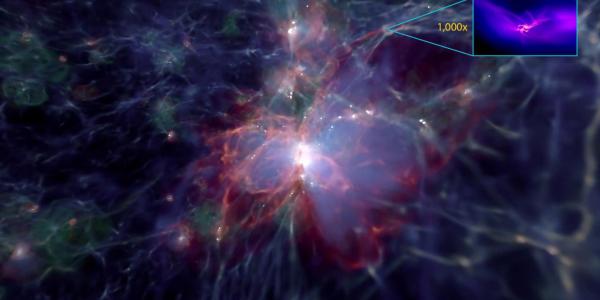Nuclear Physics Seminar: Dan Mulrow, Bryan Orabutt, Nicolas Dronchi
Simulating the effect of Ultra-High Dose Rate on DNA Strand Break
Speaker: Dan Mulrow
Ultra-high dose rate radiation therapy, or FLASH radiation therapy, has recently regained interest in the field of Radiation Oncology. Irradiating tissue at these ultra-high rates has shown a normal tissue sparing effect when compared to conventional dose rates in pre-clinical trials. This technique requires clinical therapy doses to be delivered at ultra-fast rates several orders of magnitude higher than conventional dose rates. Not all studies involving ultra-high dose rates have produced a normal tissue sparing effect which has resulted in the debate of the FLASH phenomenon. Other works have compared the mean dose rate, the total dose, and the oxygen-dependency required to observe the FLASH effect. This work looks to break down the literature based on the dose delivered in a single pulse, i.e. instantaneous dose rate, and the biological endpoint of interest. Further analysis was performed by simulating DNA strand breaking to better understand certain biological endpoints with respect to instantaneous dose rate. Through this lens we aim to provide a chemical description to bridge the physical and the biological limitations of these studies. In doing so we hope to find trends among the existing literature to assess the feasibility of FLASH radiation therapy and to better guide future studies.
Applied Optimization on Mixed Mode Systems for Pulse Shape Discrimination
Speaker: Bryan Orabutt
Pulse-shape discrimination (PSD) is a technique that has long been used for n/γ detection. Traditionally PSD capable systems are designed either using pure analog techniques, or pure digital-signal processing (DSP). Pure analog designs reduce system complexity allowing for higher detector channel counts. These pure analog systems are algorithm locked however, generally using fixed integration gates to do PSD giving minimal flexibility. Pure DSP systems allow for more advanced algorithms to be employed but suffer from linear time logic due to fixed frequency clock sampling. This poses a problem since pulse information is nonlinear in time. We are investigating mixed-mode systems that act as a middle ground between these two extremes. We will optimize this design topology to minimize system complexity,
maximize detector channel counts, and maximize dynamic range. We will use test cases including liquid organic scintillators and plastic scintillators with n/γ PSD.
Search for an S-Wave Resonance in 7Li Just Above the Proton Decay Threshold
Speaker: Nicolis Dronchi
Near threshold resonances play an outsized role in nucleosynthesis and applied nuclear science. The study of nuclei removed from stability has greatly extended the list of resonances very close to decay thresholds. A recent theory paper employing a continuum-extended version of the no-core shell model indicates three quarters of a century of nuclear science may have missed a resonance in 7Li just above the proton decay threshold at an excitation energy of 10 MeV [1]. This is plausible as this positive parity J = 1/2 resonance would not be easy to populate, resulting in being obscured by both broader and more easily populated neighboring states. We will present our plans to search for this resonance using a secondary-beam transfer experiment and the invariant-mass technique. The latter is a technique that is ideally suited to the observation of narrow resonances just above decay thresholds.
- M. Vorabbi, P. Navra'til, S. Quaglioni and Q. Hupin, Phys. Rev. C 100, 024304 (2019).

